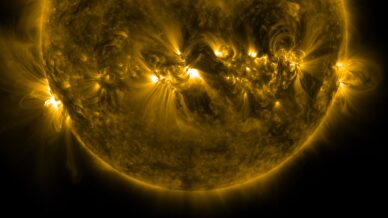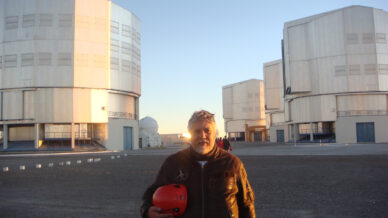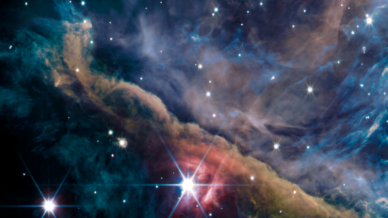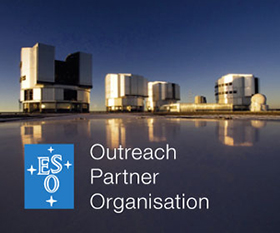Formats: Listen
See all
Most detailed map of our galaxy in infrared
Thirteen years of observations led to the most detailed map of Milky Way. Nanda Kumar, an IA collaborator, talked to the podcast Palavra de Cientista about it.
Read more

The technology and science of the largest telescope in the world
The Extremely Large Telescope (ELT), of ESO, will be one of the forthcoming technological marvels of Humankind. Alexandre Cabral talked to Expresso newspaper of the expectations regarding what will become the largest telescope ever.
Read more

Astronomy and Mental Health – Interview at Rádio Aurora
The researcher Tiago Campante shared his awe for the Universe with the team behind the radio project that gives voice to the madness and normality of the world we live in: Rádio Aurora – A Outra Voz (“the other voice”).
Read more

Deepen solar physics using artificial intelligence
Conversation with Ricardo Gafeira, of the Universidade de Coimbra and IA, in the podcast “Palavra de Cientista” about the article he co-authored “Machine learning in solar physics”.
Read more

Euclid and the invisible Universe – two conversations
Ismael Tereno and António da Silva, both researchers at IA, talked about the Euclid space mission and the 95 percent of the Universe still unknown – the dark matter and the dark energy – to Antena 1 public radio and Palavra de Cientista podcast.
Read more

Venus and other cosmic neighbours and missions to explore them
In an interview for the podcast O Futuro do Futuro from Expresso, Pedro Machado tells us about Venus, Mars and other “neighbouring” planets and moons from our cosmic backyard called Solar System, and about space missions to study them.
Read more

Black holes, judo and radiotelescopes
In the podcast Caravela Cósmica, Hugo Messias shared his academic path and spoke about his current job at the ALMA Observatory, in Chile.
Read more

First images of the Orion Nebula by the JWST
In the podcast Palavra de Cientista, Sílvia Vicente shows us the importance of the most recent images of the Orion Nebula by the James Webb Space Telescope.
Read more

